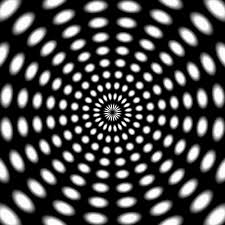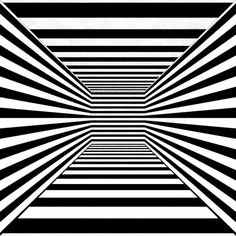|
(2019
final exam assignment) Model final exam answers 2019 (Index) Essay 3: Web Highlights |
 |
Sage Butler
Opposite Sex in Science Fiction: The Stark Differences
in Gender Portrayal
As science fiction has largely been dominated by men, we
have many examples of woefully-written women in the genre. This is present in
several texts from our course, including “The Belonging Kind,” in which the male
narrator describes the “two-dimensional” beauty and the body of the woman in the
bar before even interacting with her. The Bible is another significant work that
features this, beginning with the first woman, Eve, who was tempted by Satan and
becomes ruled by her husband in the Book of Genesis, and ending with Revelation,
in which the only women written represent the two extremes that females are
often written as: The Woman Clothed with the Sun, who is ethereal and pure, and
The Whore of Babylon, who is symbolic for evil and overtly sexualized.
Throughout our course, though, I have also noticed that
in several texts that were featured in our class, the female author had a more
negative characterization of men. This is present in the aggressive tendencies
and violent behaviors that many of the men exhibit in Octavia Butler’s “Speech
Sounds” and Parable of the Sower,
including brutal rape, assault, and murder. This pattern of writing the opposite
sex as depictions of the worst stereotypes of their genders can be damaging to
the perceptions of your readers, as well as limit yourself as a writer.
Particularly, sexual violence and hyper-sexualization of
women is notable in the genre, as much of science fiction has been written by
men. Timothy Morrow explores this in “All Lilies Wither: Analyzing Sexual
Representation and Violence Towards Women in Sci-Fi.” By using concrete examples
and vivid character examples, Morrow helps his readers understand truly how
significant the sexualization and violence towards women in Science Fiction
really is. The following quote, taken from the introduction of “All Lilies
Wither,” is what really enchanted me regarding Morrow’s writing:
As the decades roll by for the world of Science Fiction
literature, the depiction of women characters are adapting from the sexist view
point of being “eye candy” into becoming dynamic characters that are valued for
more than just their sexuality. Although the theme of sexualized and oppressed
women in Science fiction is on the decline… it is important to observe the
depiction of exploited women’s roles in narratives of the future as tools for
escapism…”
By recognizing that, though there is positive change
coming about in the genre regarding the writing of women, it is still critical
that we examine the more oppressive ways females have been written. Doing so
helps us to think critically about the society that provided the context for
these objectified women to not only be written, but also enjoyed by many, and
allows us to leave these sexist attitudes behind as we move towards progress.
While it is important to examine the ways that authors
characterize those of another gender, we must also observe the opposite, to
truly understand the issue, as both men and women tend to write characters of
their own sex in more positive lights than authors of the opposite sex.
Throughout her essay, “Subtle Strength: Female Characterization by Women in
Literature of the Future,” Laura Wilson repeatedly describes how female authors
write more subtly powerful women, who female readers can connect with on a
deeper level than those written by men. Wilson used passionate, highly
descriptive language to compare the ways men and women were depicted, and
provided both examples of the issues from both in-class and outside readings,
which is what interested me about her essay. Reading “Subtle Strength” sparked a
more complete idea that had been in the back of my mind about the different ways
authors characterize by gender, and introduced me to new perspectives I did not
experience solely through attending class. Personally, I noticed that men are
more likely to write male characters who were more intelligent than aggressive,
such as in “Chocco” and The Time Machine.
It is important to explore the differences in how men and
women write the sexes, so we can make progress to improve the depth of all
characters in stories. Zach Mayfield wrote in his essay, “A Gendered View of the
Apocalypse,” that apocalyptic narratives are largely masculine—even the female
characters are given less “feminine” qualities. Though this may be true, in many
ways this may be good. For example, Mayfield writes in paragraph 2 that “Lauren
is already portrayed as a sort of tomboy in that she is able to use a gun, and
that she is not submissive.” However, I believe that her having the survival
skills that are necessary to survive, and the confidence to utilize those, is a
step towards progress—women, even in the same story, are often helpless victims
or idealized beauties. I found reading this perspective fascinating, though I do
disagree with some of the points made, such as Rye rediscovering her femininity
through caring for the children. Mayfield uses language that is more direct in
making his point, and exposed me to another perspective I otherwise would not
have understood before. I chose to highlight his essay, as, though it differs
from what I am writing about in many ways, it is important to learn more about
others’ views so we can expand our own.
There has been a lot of progress
made in moving away from the stereotyped characterizations of both men and women
in science fiction, and it is important to examine the writing that has been
done so we can be more aware of how we write characters. It is especially
critical for science fiction authors to read it, as it helps them become aware
of how to write characters with more depth that all readers can connect to. As
more people learn about the negative implications that writing characters of the
opposite sex have on their stories, we will have more impactful works of science
fiction to read.



